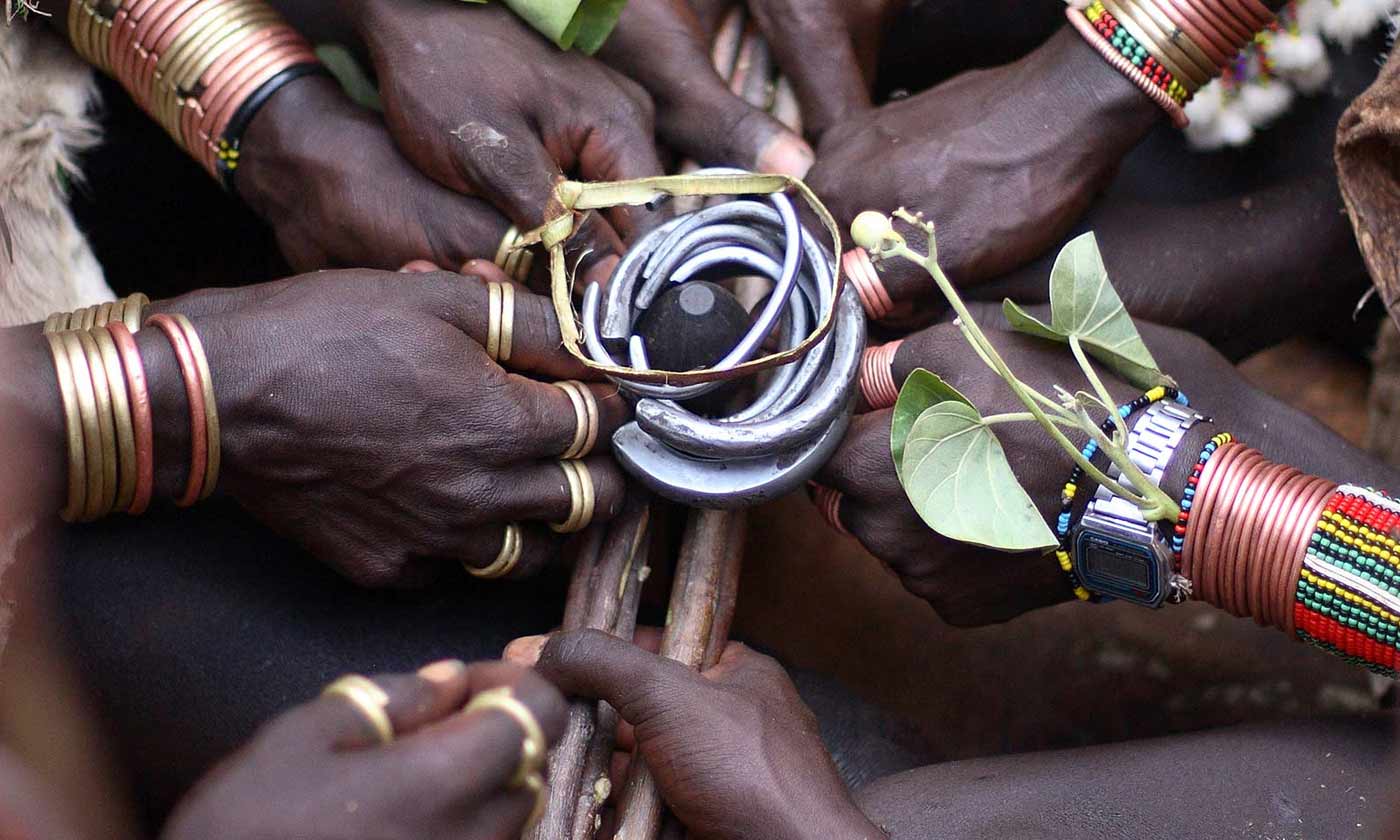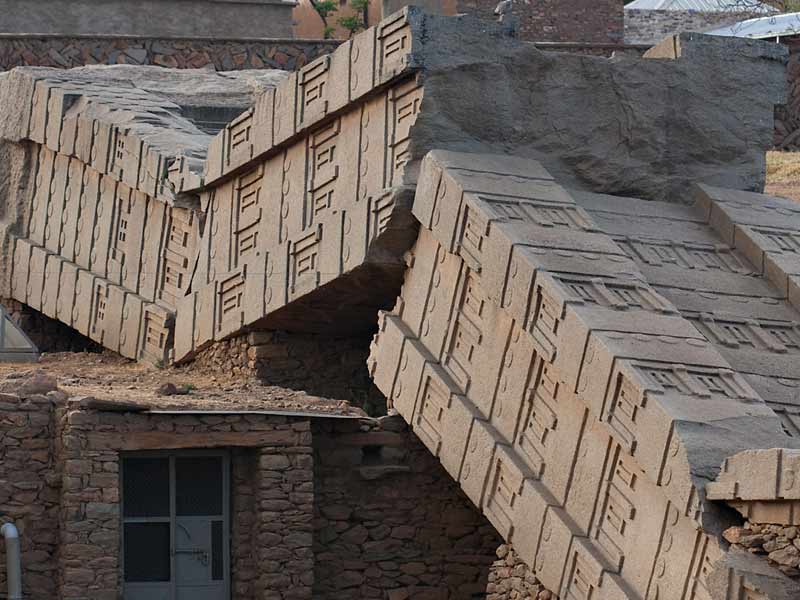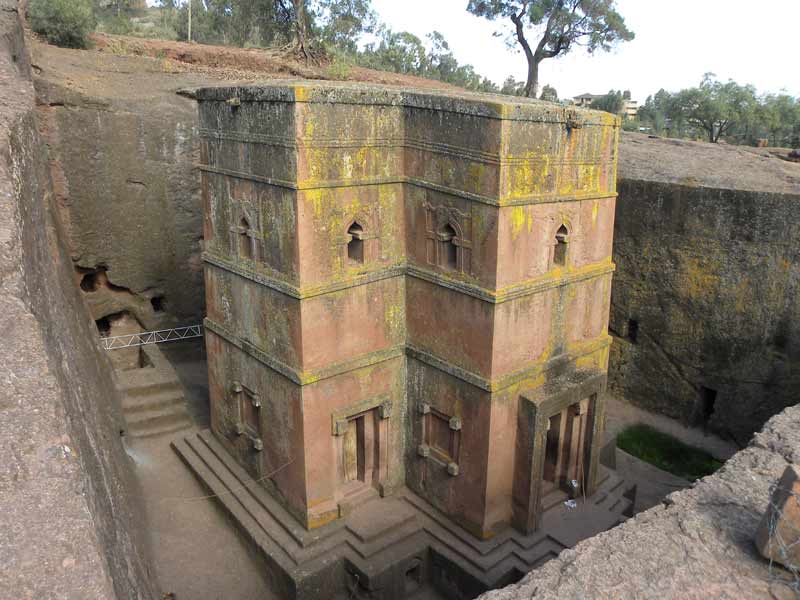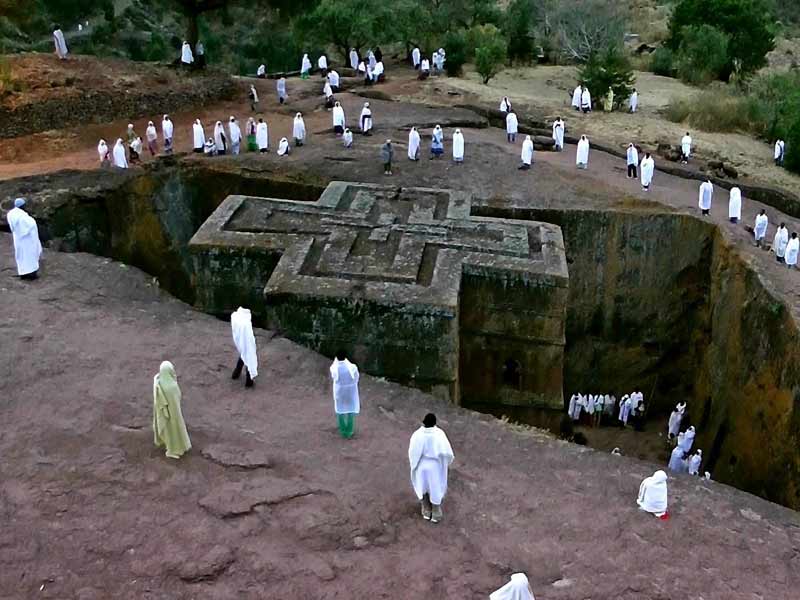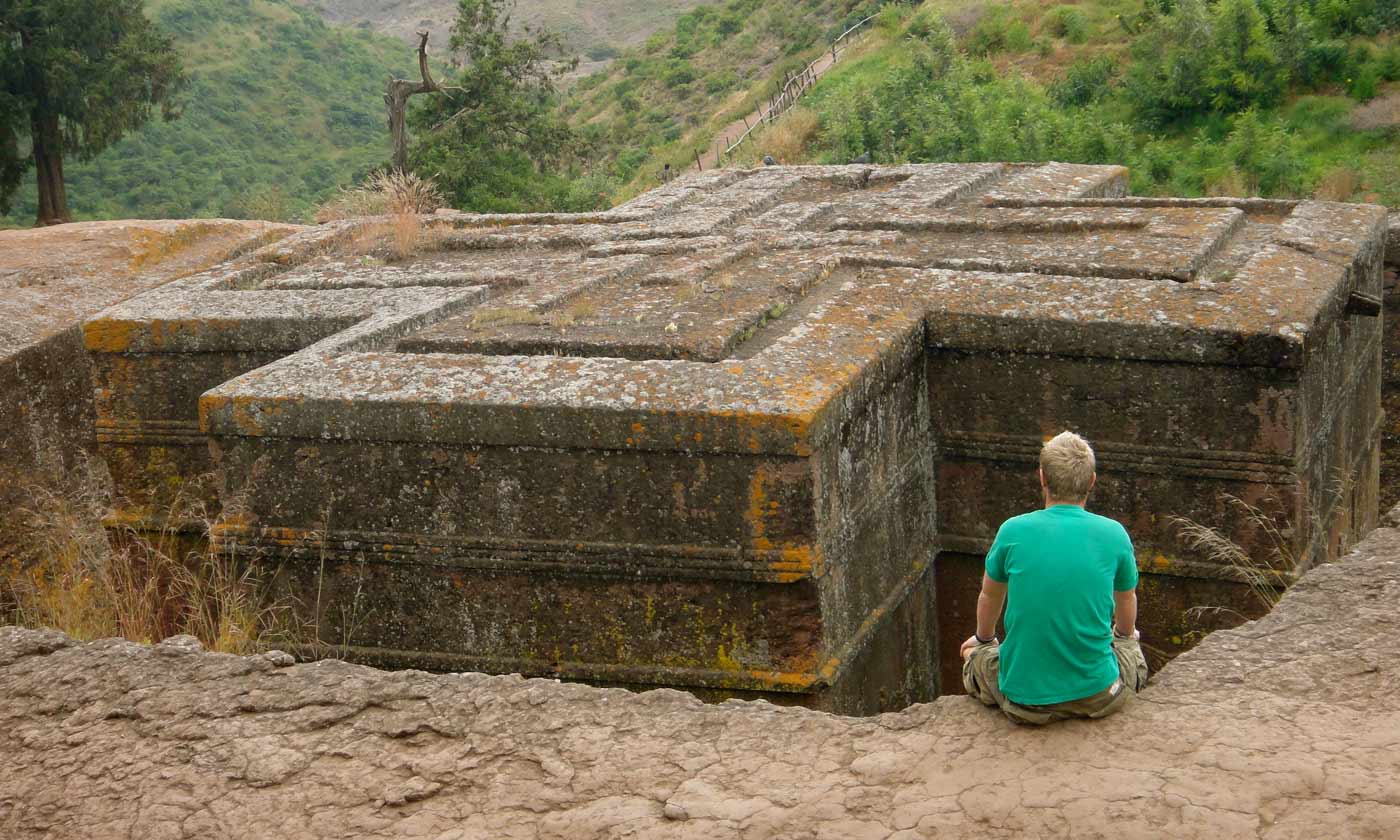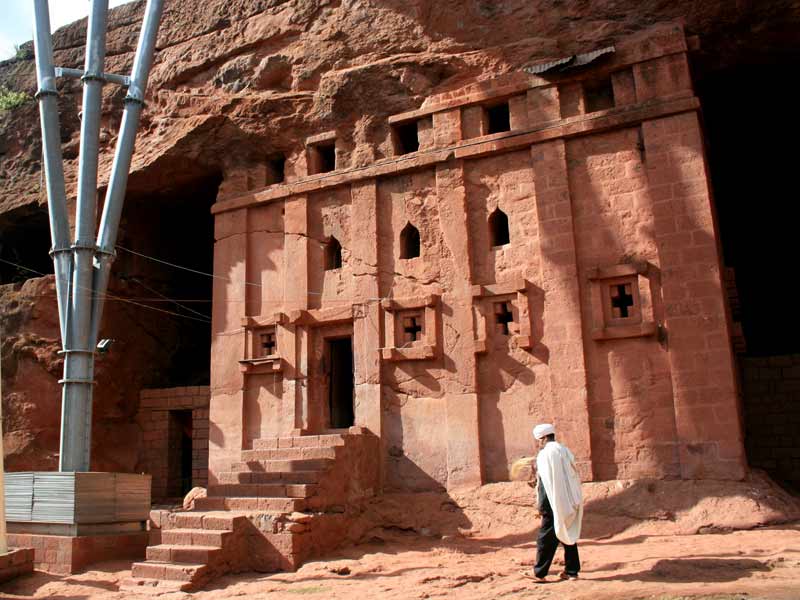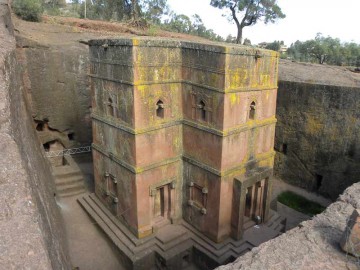-
Featured
-
Featured
-
Featured
-
Featured
You are booking for Rock-Hewn Churches Of Lalibela
Lalibela is located approximately 600 km north of Addis Ababa in the Amhara Regional state, situated at an altitude of 2,500 meters. In its center lies a unique complex of 11 rock-hewn churches cut out of the living rock some 800 years ago. The churches were registered on the World Heritage List in 1978. These churches were sculpted out of solid volcanic rock and are often connected by long underground tunnels and labyrinths. Their construction is attributed to King Lalibela (1167-1207), of the Zagwe dynasty, who attempted to create a New Jerusalem on the African continent to make it accessible to all Ethiopians. The churches are still used for daily worship and special ceremonies, receiving pilgrims and large crowds during holidays such as Christmas and Easter.
There are two main groups of churches – to the north of the river Jordan: Biete Medhani Alem, Biete Mariam, and Beta Golgotha which is known for its artwork which includes life-sized carvings of saints on the walls. It is also home to the tomb of King Lalibela, over which stands a gold-draped Ark, Biete Maskal, Biete Denagel; and to the south of the river, Biete Amanuel, Biete Qeddus Mercoreus , Biete Abba Libanos , Biete Gabriel Raphael, and Biete Lehem. The eleventh church, Biete Ghiorgis, is isolated from the others, but linked by arrangement of trenches.
Lalibela churches are free standing churches with high level of architectural sophistication and perfection. The churches were not constructed in a traditional way but rather were hewn from the living rock of monolithic blocks. These blocks were further chiseled out, forming doors, windows, columns, various floors and roofs. This gigantic work was further completed with an extensive system of drainage ditches, trenches and ceremonial passages, some with openings to hermit caves and catacombs.
The rock-hewn churches of Lalibela are exceptionally fine examples of a long-established Ethiopian building tradition. Monolithic churches are to be found all over the north and the centre of the country. Some of the oldest of such churches are to be found in Tigray, wheresome are believed to date from around the 6th or 7th centuries. King Lalibela is believed to have commissioned these structures with the purpose of creating a holy and symbolic place which considerably influenced Ethiopian religious beliefs.

